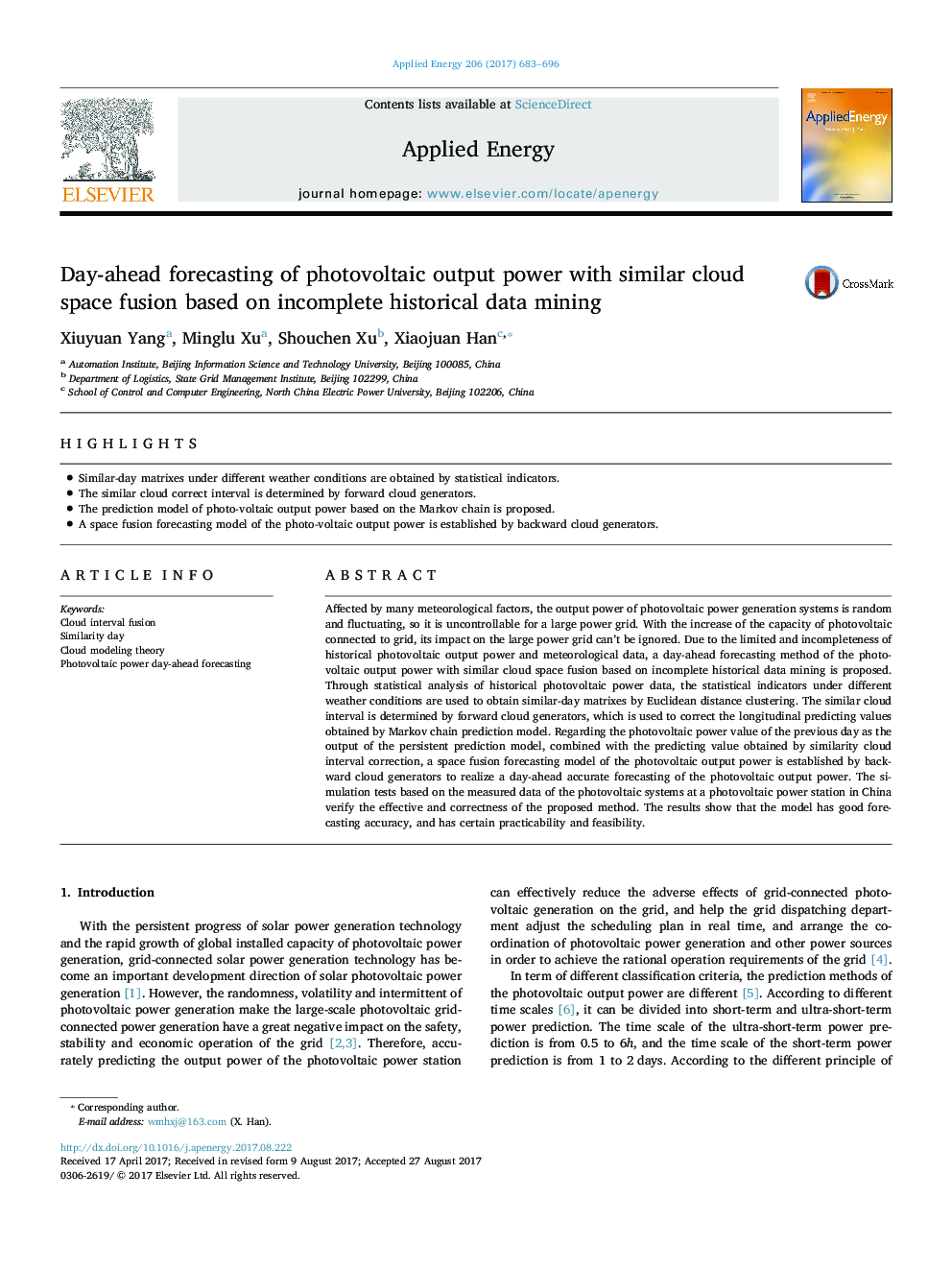| Article ID | Journal | Published Year | Pages | File Type |
|---|---|---|---|---|
| 4915711 | Applied Energy | 2017 | 14 Pages |
Abstract
Affected by many meteorological factors, the output power of photovoltaic power generation systems is random and fluctuating, so it is uncontrollable for a large power grid. With the increase of the capacity of photovoltaic connected to grid, its impact on the large power grid can't be ignored. Due to the limited and incompleteness of historical photovoltaic output power and meteorological data, a day-ahead forecasting method of the photovoltaic output power with similar cloud space fusion based on incomplete historical data mining is proposed. Through statistical analysis of historical photovoltaic power data, the statistical indicators under different weather conditions are used to obtain similar-day matrixes by Euclidean distance clustering. The similar cloud interval is determined by forward cloud generators, which is used to correct the longitudinal predicting values obtained by Markov chain prediction model. Regarding the photovoltaic power value of the previous day as the output of the persistent prediction model, combined with the predicting value obtained by similarity cloud interval correction, a space fusion forecasting model of the photovoltaic output power is established by backward cloud generators to realize a day-ahead accurate forecasting of the photovoltaic output power. The simulation tests based on the measured data of the photovoltaic systems at a photovoltaic power station in China verify the effective and correctness of the proposed method. The results show that the model has good forecasting accuracy, and has certain practicability and feasibility.
Related Topics
Physical Sciences and Engineering
Energy
Energy Engineering and Power Technology
Authors
Xiuyuan Yang, Minglu Xu, Shouchen Xu, Xiaojuan Han,
